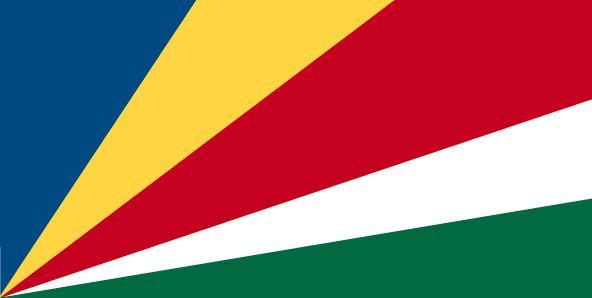The directory «Countries»
Republic of Seychelles

Republic (2005 est. pop. 81,000), c.110 sq mi (285 sq km), comprising approximately 100 islands in the Indian Ocean, c.600 mi (970 km) N of Madagascar and c.1,000 mi (1,600 km) E of Mombasa, Kenya. The capital and only urban center and port is Victoria, located on the largest island, Mahé (c.55 sq mi/140 sq km), where about 90% of the population lives.
Mahé and the other principal islands (Praslin, La Digue, Silhouette, and Curieuse) are granitic; there are also around 50 coralline islands. The population is mainly of mixed French, African, South Asian, Chinese, and Arab descent. Over 80% of the population is Roman Catholic, but there are other Christian, Hindu, and Muslim minorities. Most of the inhabitants speak a creole language, although English is the official language.
Coconuts, cinammon, vanilla, sweet potatoes, cassava, and bananas are grown. Tourism has expanded rapidly since the 1970s, and provides the bulk of the country’s hard currency earnings. Fishing, agricultural processing, and boat building are the other important industries. Canned tuna, frozen fish, cinnamon bark, copra, and vanilla are exported. Machinery and equipment, foodstuffs, petroleum products, and chemicals are imported. Spain, Great Britain, France, Saudi Arabia, and South Africa are important trading partners.
The Seychelles is governed under the constitution of 1993. The president, who is both head of state and head of government, is popularly elected for a five-year term and is eligible for two more terms. The unicameral legislature consists of the 34-seat National Assembly. Twenty-five members are elected by popular vote, and nine are chosen proportionally by parties winning at least 10% of the vote. All serve five-year terms. Administratively, the country is divided into 23 districts.
Probably known earlier to the Arabs, the Seychelles were explored by Vasco da Gama in 1502. In 1756 the French claimed the islands, and colonization by French planters and their slaves from Mauritius (Île de France) began in 1768. Britain took possession of the Seychelles in 1794 and gained permanent control of them by the Treaty of Paris (1814). The islands were administered as part of Mauritius until 1903, when they were constituted a crown colony. The first elections to a legislative council were held in 1948.
The Seychelles became self-governing in 1975 and gained independence within the Commonwealth of Nations in 1976. The first president, James Mancham, was overthrown in a bloodless coup in 1977 and replaced by Albert René, the head of the Seychelles People’s Progressive Front. René suspended the existing constitution and in 1979 established a presidential government and one-party rule. He also introduced significant social reforms, maintained ties with Western nations, and fostered economic diversification. A multiparty democracy was reestablished in the Seychelles under the new constitution of 1993; René won reelection in 1993, 1998, and 2001. He retired in Apr., 2004, and was succeeded by his vice president, James Michel. In Aug., 2006, Michel was elected president in his own right.
1989, Flags of Seychelles and France
1989, Storming the Bastille
1989, Reading Revolutionary proclamation, 1791

